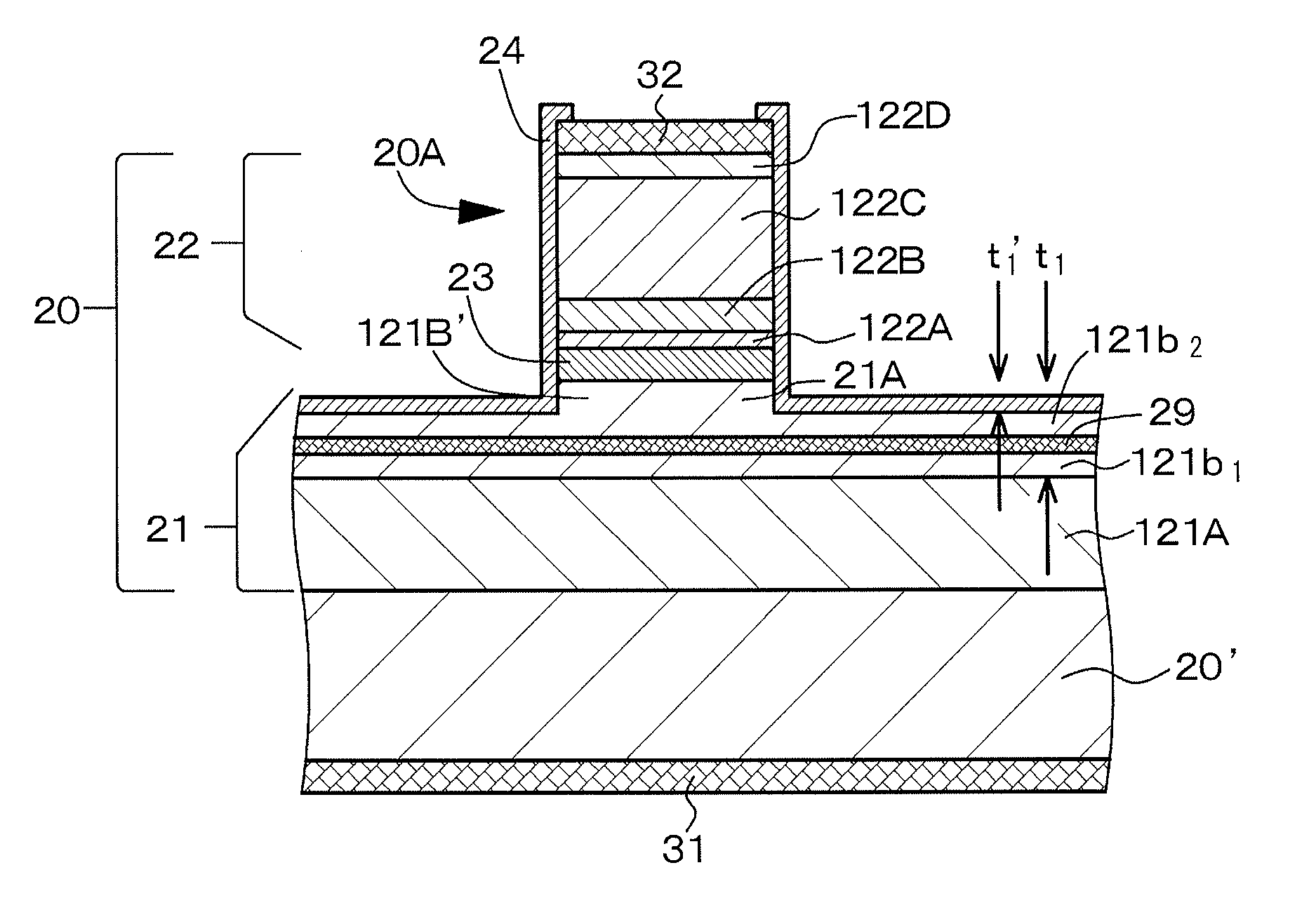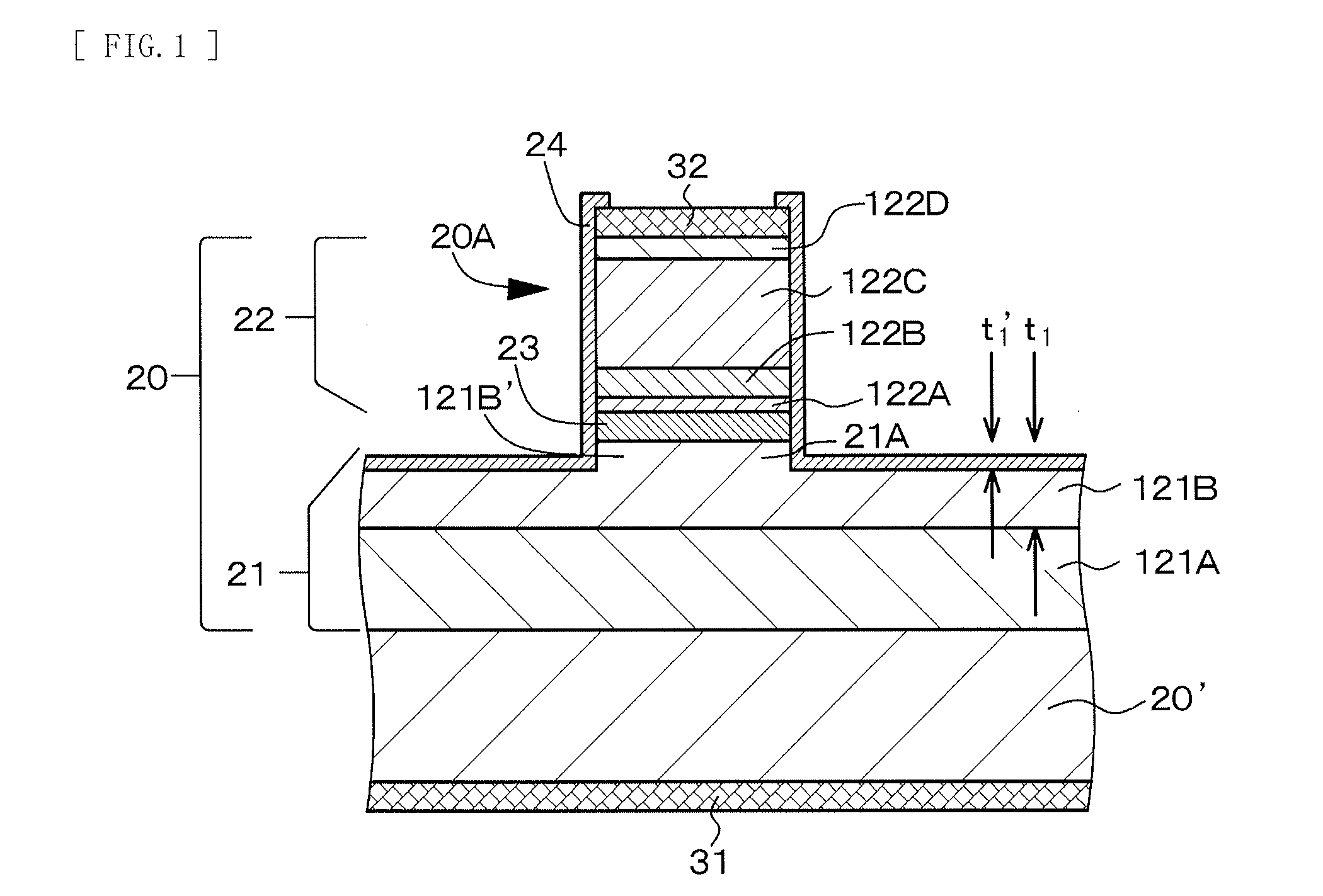Light-emitting device and method of manufacturing the same
a technology of light-emitting devices and manufacturing methods, which is applied in the direction of lasers, semiconductor amplifier structures, semiconductor lasers, etc., can solve the problems that the semiconductor optical amplifiers for the 405-nm band have rarely been used in the practical use, and achieve the effects of high quality, no adverse effects such as deterioration of condensing characteristics, and high reliability
- Summary
- Abstract
- Description
- Claims
- Application Information
AI Technical Summary
Benefits of technology
Problems solved by technology
Method used
Image
Examples
example 4 (modification of any of examples 1 to 3)
5. Example 4 (Modification of any of Examples 1 to 3)
[0051]6. Example 5 (Modification of any of Examples 1 to 4), and others
[0052]In a third method of manufacturing a light-emitting device according to the present disclosure, for example, a growth inhibition layer may be preferably configured of a material layer of one or more kinds selected from a group configured of SiO2, Al2O3, MN, ZrO2, Ta2O5, and AlGaInN.
[0053]In a light-emitting device in any of first to third methods of manufacturing a light-emitting device according to the present disclosure or a light-emitting device according to the present disclosure that has the above-described preferred mode, it may be desirable to satisfy t1≦3×10−6 m. When crystal growth is performed to allow a thickness t1 of a first guide layer to be equal to or smaller than 3×10−6 m, crystal growth surface morphology is not roughened, and deterioration in light emission characteristics and electrical characteristics of the light-emitting device is p...
example 1
[0077]Example 1 relates to the light-emitting device according to the present disclosure, and the first method of manufacturing the light-emitting device according to the present disclosure. Specifically, a light-emitting device of Example 1 is a laser diode device, and as illustrated in a schematic partial sectional view taken along a virtual plane perpendicular to an axis line of the light-emitting device in FIG. 1, the light-emitting device of Example 1 includes a laminate structure body 20 configured by laminating, in order, a first compound semiconductor layer 21 of a first conductivity type, an active layer (a light emission region or a gain region) 23 made of a compound semiconductor, and a second compound semiconductor layer 22 of a second conductivity type different from the first conductivity type on a base substrate 20′, a second electrode 32 formed on the second compound semiconductor layer 22, and a first electrode 31 configured to be electrically connected to the first...
example 2
[0104]Example 2 is a modification of the light-emitting device of Example 1, and relates to the second method of manufacturing the light-emitting device according to the present disclosure. Specifically, a light-emitting device of Example 2 is also a laser diode device, and as illustrated in a schematic partial sectional view taken along a virtual plane perpendicular to an axis line of the light-emitting device in FIG. 7(C), two recess sections 25 extending along an axis line direction of the light-emitting device are formed in the base substrate 20′. Then, the laminate structure body 20 described in Example 1 is formed entirely, i.e., on the two recess sections 25 and a region 26 sandwiched between the two recess sections 25 of the base substrate 20′. Moreover, the second electrode 32 is disposed above the region 26 of the base substrate 20′.
[0105]In this case, the first compound semiconductor layer 21 has a laminate structure including a first cladding layer and a first light guid...
PUM
 Login to View More
Login to View More Abstract
Description
Claims
Application Information
 Login to View More
Login to View More - R&D
- Intellectual Property
- Life Sciences
- Materials
- Tech Scout
- Unparalleled Data Quality
- Higher Quality Content
- 60% Fewer Hallucinations
Browse by: Latest US Patents, China's latest patents, Technical Efficacy Thesaurus, Application Domain, Technology Topic, Popular Technical Reports.
© 2025 PatSnap. All rights reserved.Legal|Privacy policy|Modern Slavery Act Transparency Statement|Sitemap|About US| Contact US: help@patsnap.com



